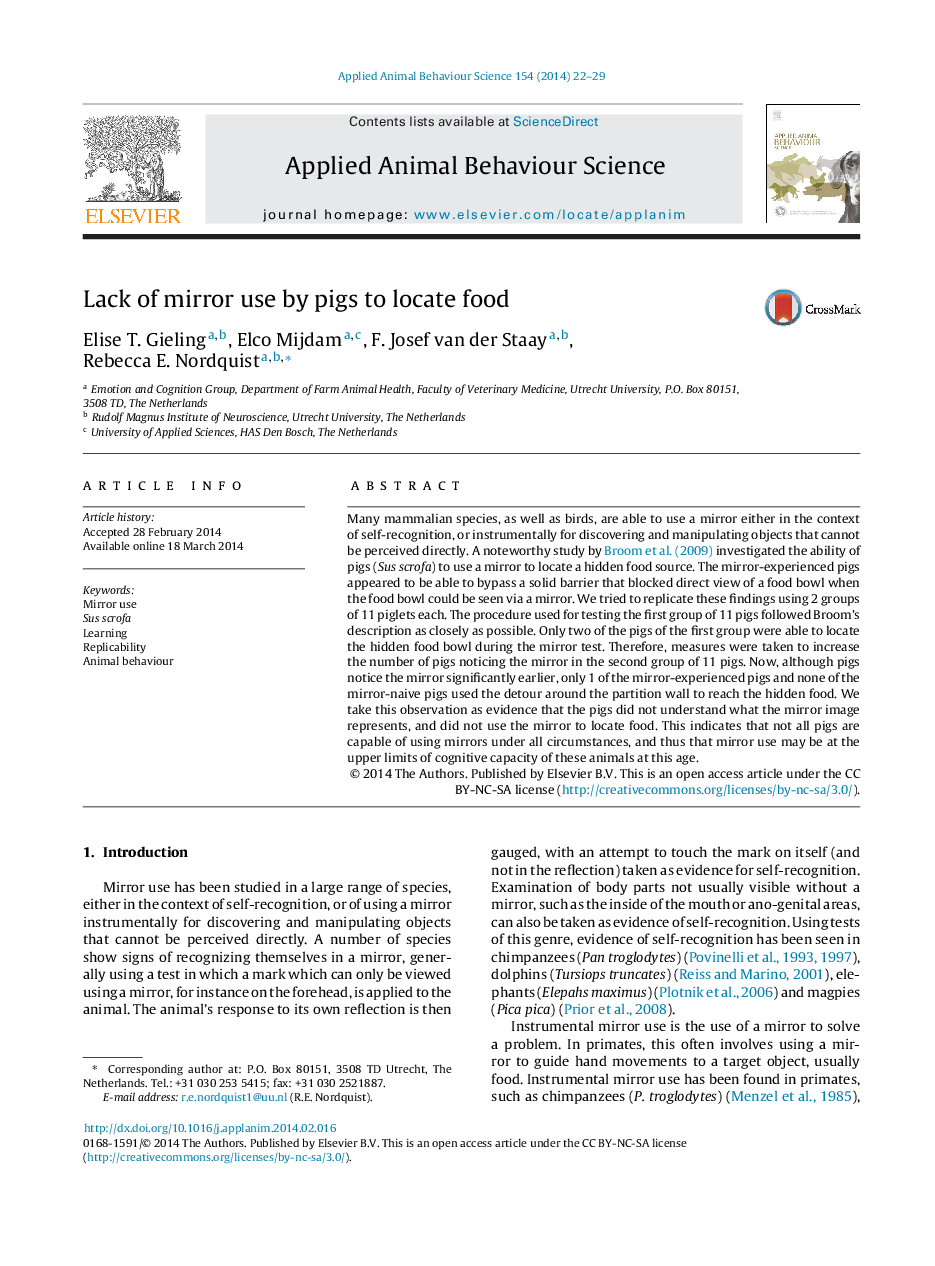| Article ID | Journal | Published Year | Pages | File Type |
|---|---|---|---|---|
| 6379690 | Applied Animal Behaviour Science | 2014 | 8 Pages |
Abstract
Many mammalian species, as well as birds, are able to use a mirror either in the context of self-recognition, or instrumentally for discovering and manipulating objects that cannot be perceived directly. A noteworthy study by Broom et al. (2009) investigated the ability of pigs (Sus scrofa) to use a mirror to locate a hidden food source. The mirror-experienced pigs appeared to be able to bypass a solid barrier that blocked direct view of a food bowl when the food bowl could be seen via a mirror. We tried to replicate these findings using 2 groups of 11 piglets each. The procedure used for testing the first group of 11 pigs followed Broom's description as closely as possible. Only two of the pigs of the first group were able to locate the hidden food bowl during the mirror test. Therefore, measures were taken to increase the number of pigs noticing the mirror in the second group of 11 pigs. Now, although pigs notice the mirror significantly earlier, only 1 of the mirror-experienced pigs and none of the mirror-naive pigs used the detour around the partition wall to reach the hidden food. We take this observation as evidence that the pigs did not understand what the mirror image represents, and did not use the mirror to locate food. This indicates that not all pigs are capable of using mirrors under all circumstances, and thus that mirror use may be at the upper limits of cognitive capacity of these animals at this age.
Related Topics
Life Sciences
Agricultural and Biological Sciences
Animal Science and Zoology
Authors
Elise T. Gieling, Elco Mijdam, F. Josef van der Staay, Rebecca E. Nordquist,
